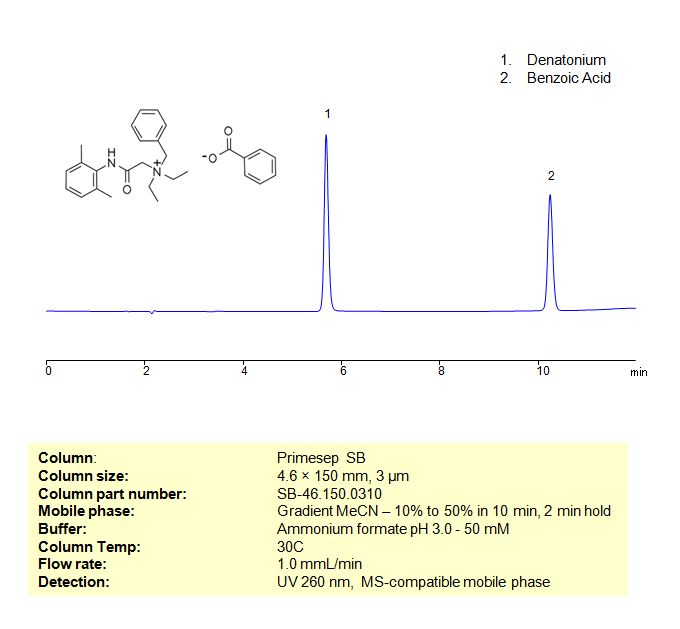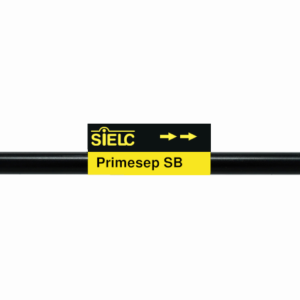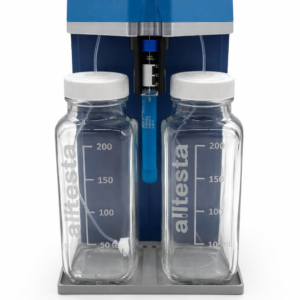Denatonium Benzoate is the most bitter compound ever discovered. It has several popular applications, including as a key ingredient in denaturing ethanol (for tax and sales purposes), as a placebo to mimic the bitter taste of certain pills, and as a biochemical warning to prevent the consumption of various types of harmful organic substances (including methanol, acetone, and paint, among others). Denatonium Benzoate can be separated and retained on a mixed-mode Primesep SB column with embedded strong basic ion-pairing groups, using a gradient analytical method with a simple mobile phase of water, Acetonitrile (MeCN), and an Ammonium Formate (AmFm) ionic modifier. This analysis method can be UV detected at 260 nm with high resolution and peak symmetry and is compatible with Mass Spectrometry (MS), ELSD, and CAD.
| Separation type: Liquid Chromatography Mixed-mode | ||||||||||||||
|
|
||||||||||||||
| High Performance Liquid Chromatography (HPLC) Method for Analysis of Denatonium benzoate acid | ||||||||||||||
|
Application Column
Primesep SB
The Primesep family of mixed-mode columns offers a wide variety of stationary phases, boasting unprecedented selectivity in the separation of a broad array of chemical compounds across multiple applications. Corresponding Primesep guard columns, available with all stationary phases, do not require holders. SIELC provides a method development service available to all customers. Inquire about our specially-tailored custom LC-phases for specific separations.
Select options





